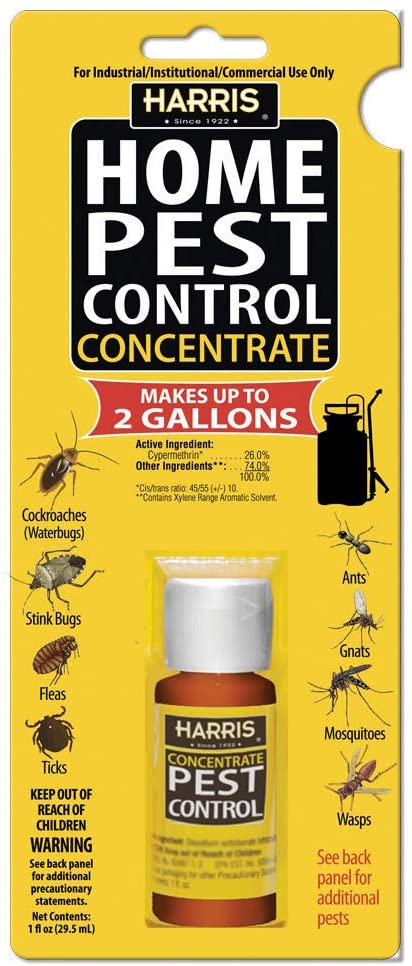Bed Bug Therapy Break Down: Contrasting Chemical Vs. Non-Chemical Solutions
In the world of insect control, specifically when managing the relentless problem of bed pests, the choice between chemical and non-chemical treatment services can be an essential one. Both approaches supply unique advantages and disadvantages, affecting variables such as efficiency, safety and security factors to consider, and overall cost. By examining the nuanced details of each technique, a more clear understanding of which course to go after in resolving a bed bug invasion can be obtained.
Performance of Chemical Therapies
Chemical treatments for bed bug infestations have been commonly acknowledged for their powerful and quick efficiency in eradicating these pests. When considering the efficiency of chemical therapies, it is crucial to understand that they can provide a quick and thorough remedy to a bed insect problem. Expert pest control specialists typically depend on pesticides to target bed insects at various stages of their life process, consisting of adults, fairies, and eggs. These chemicals typically function by interrupting the bed bugs' nerve system, leading to paralysis and ultimate death.
Furthermore, chemical treatments have the benefit of using recurring effects, implying that they can remain to eliminate bed insects also after the initial application. This recurring action is specifically useful in combating any kind of possible re-infestations. In addition, the fast activity of chemical treatments can bring relief to people dealing with extreme bed pest infestations, allowing them to reclaim control of their living spaces swiftly.
Safety Worries With Chemical Solutions
One critical element that requires cautious consideration when making use of chemical solutions for bed pest treatment is ensuring the safety and security of residents and the environment. Direct exposure to certain chemicals made use of in bed bug therapies can lead to breathing concerns, skin irritation, or various other adverse reactions, specifically in people with pre-existing problems or sensitivities.
Furthermore, the ecological impact of chemical options is another considerable factor to consider. Some pesticides utilized in bed pest treatments may be dangerous to helpful insects, wildlife, and ecosystems if they seep right into the dirt or water supply. It is important to make use of chemical treatments judiciously, complying with security standards, and thinking about much less poisonous alternatives to reduce these risks and make sure the secure and efficient monitoring of bed bug infestations.
Benefits of Non-Chemical Methods
Considering the prospective security worries and ecological influence related to chemical options for bed insect therapy, checking out non-chemical strategies offers a promising alternative with several distinct my response benefits. Non-chemical approaches offer a safer option for households, specifically those with people, family pets, or kids sensitive to rough chemicals. These approaches get rid of the threats of exposure to toxic substances, reducing the potential for damaging health impacts. Additionally, non-chemical therapies are eco friendly, as they do not add to air or water contamination, making them a sustainable selection for bug control.
Additionally, non-chemical remedies can be efficient in targeting bed insects, including hard-to-reach locations where chemical treatments might not penetrate. Approaches such as warmth treatment, vacuuming, heavy steam cleansing, and bed mattress encasements supply comprehensive removal without using damaging chemicals. Moreover, non-chemical strategies can be less disruptive, calling for minimal preparation and permitting quicker reentry right into dealt with areas. Generally, going with non-chemical bed insect therapy techniques not only focuses on safety and environmental security yet additionally makes certain efficient and extensive pest control.
Limitations of Non-Chemical Treatments

In addition, non-chemical therapies frequently need numerous applications to achieve effective obliteration. This can be time-consuming and may not constantly assure complete removal of all bed pests and their eggs, particularly in surprise or hard-to-reach locations.
Moreover, the success of non-chemical therapies greatly counts on correct implementation and thoroughness, which can be challenging for individuals without expert proficiency. Inadequate application of non-chemical approaches may result in incomplete eradication, resulting in consistent problems and the need for additional treatments.
Therefore, while non-chemical therapies have their benefits, it is necessary to acknowledge these limitations and consider them when identifying the most efficient technique for taking care of bed insect problems.
Price Contrast: Chemical Vs. Non-Chemical Options
Offered the limitations associated with non-chemical treatments, an important facet to examine in the context of bed pest monitoring is the price comparison between chemical and non-chemical choices. In contrast, non-chemical treatments like warm therapy or heavy steam can navigate here be extra expensive, with costs ranging from $1,000 to $6,000 for a whole home. While the first cost of chemical therapies may seem reduced, multiple treatments may be required to totally remove the infestation, possibly boosting the general expense.
Final Thought

Taking into consideration the potential safety issues and environmental effect linked with chemical remedies for bed pest therapy, discovering non-chemical approaches offers an encouraging choice with numerous unique advantages.Provided the limitations linked with non-chemical therapies, an important element to review in the context of bed insect monitoring is the expense contrast between chemical and non-chemical options. In contrast, non-chemical treatments like heat therapy or steam can be much more pricey, with costs varying from $1,000 to $6,000 for an entire home. While the initial price of chemical treatments might appear reduced, multiple therapies may be needed to totally eliminate the problem, possibly boosting the overall expense.In verdict, when contrasting chemical and non-chemical bed pest therapy choices, it is crucial to think about performance, safety check these guys out and security, benefits, constraints, and price.